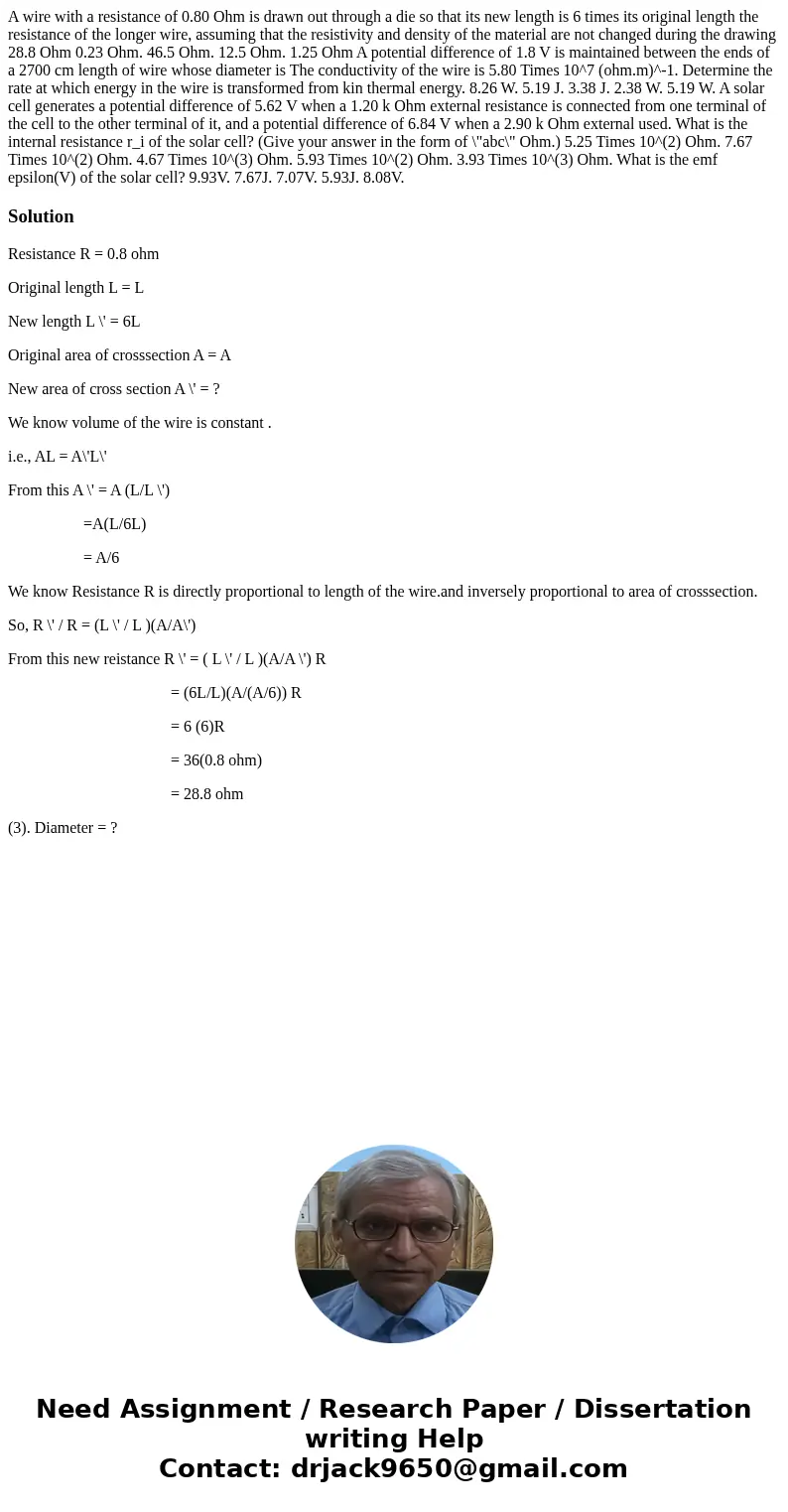A wire with a resistance of 080 Ohm is drawn out through a d
A wire with a resistance of 0.80 Ohm is drawn out through a die so that its new length is 6 times its original length the resistance of the longer wire, assuming that the resistivity and density of the material are not changed during the drawing 28.8 Ohm 0.23 Ohm. 46.5 Ohm. 12.5 Ohm. 1.25 Ohm A potential difference of 1.8 V is maintained between the ends of a 2700 cm length of wire whose diameter is The conductivity of the wire is 5.80 Times 10^7 (ohm.m)^-1. Determine the rate at which energy in the wire is transformed from kin thermal energy. 8.26 W. 5.19 J. 3.38 J. 2.38 W. 5.19 W. A solar cell generates a potential difference of 5.62 V when a 1.20 k Ohm external resistance is connected from one terminal of the cell to the other terminal of it, and a potential difference of 6.84 V when a 2.90 k Ohm external used. What is the internal resistance r_i of the solar cell? (Give your answer in the form of \"abc\" Ohm.) 5.25 Times 10^(2) Ohm. 7.67 Times 10^(2) Ohm. 4.67 Times 10^(3) Ohm. 5.93 Times 10^(2) Ohm. 3.93 Times 10^(3) Ohm. What is the emf epsilon(V) of the solar cell? 9.93V. 7.67J. 7.07V. 5.93J. 8.08V.
Solution
Resistance R = 0.8 ohm
Original length L = L
New length L \' = 6L
Original area of crosssection A = A
New area of cross section A \' = ?
We know volume of the wire is constant .
i.e., AL = A\'L\'
From this A \' = A (L/L \')
=A(L/6L)
= A/6
We know Resistance R is directly proportional to length of the wire.and inversely proportional to area of crosssection.
So, R \' / R = (L \' / L )(A/A\')
From this new reistance R \' = ( L \' / L )(A/A \') R
= (6L/L)(A/(A/6)) R
= 6 (6)R
= 36(0.8 ohm)
= 28.8 ohm
(3). Diameter = ?

 Homework Sourse
Homework Sourse